Scientists are preparing to breed and drop billions of flies on Mexico to halt a flesh-eating parasite from crossing the border.
The Trump Administration is leading the effort to prevent the spread of the New World Screwworm, which was eradicated in the US over 40 years ago but resurfaced in Mexico in late 2024.
According to US Department of Agriculture (USDA), the scientific name for the parasite, Cochliomyia hominivorax, roughly translates to ‘man-eater.’
This parasite lays its eggs in the wounds of warm-blooded animals, causing tissue damage and often kills livestock within two weeks if left untreated.
Scientists will use a proven method called the Sterile Insect Technique (SIT) in which male screwworm flies will be irradiated to make them sterile, then released by planes across southern Mexico and parts of Texas starting in mid-2025.
These sterile flies will mate with wild females, preventing reproduction and gradually reducing the population over time.
Edwin Burgess, an assistant professor at the University of Florida who studies parasites, said: ‘It’s an all-time great in terms of translating science to solve some kind of large problem.’
A breeding hub in southern Texas is set to open by the end of 2025, with a major facility in Metapa, Mexico, expected to be completed by July 2026.
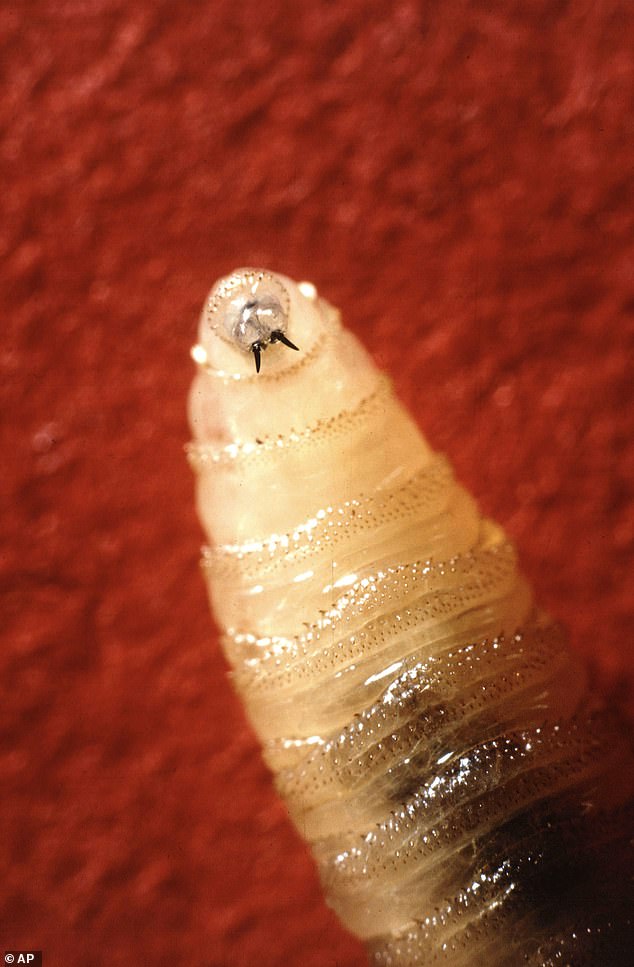
The parasite, known as the New World screwworm (Cochliomyia hominivorax) lays its eggs in the wounds of warm-blooded animals, and once they hatch, it often kills cattle within just two weeks if left untreated
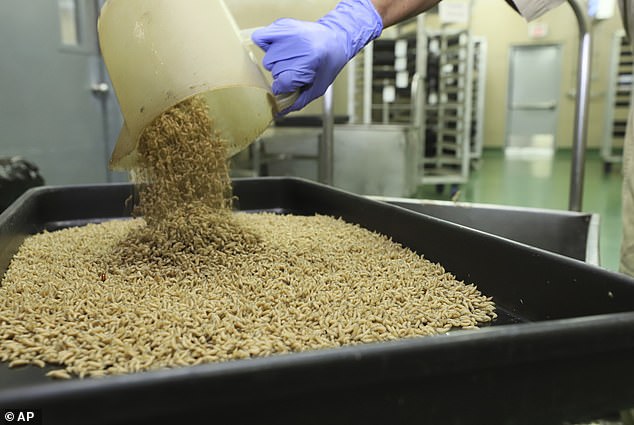
Female screwworms can lay up to 300 eggs at a time, and more than 3,000 in their short lives. Infections can be visible as wriggling maggots on the surface of the skin
While a fly factory in Panama produces 117 million flies per week, the USDA is ramping up efforts, aiming for 400 million flies weekly by leveraging new plants in Texas and Mexico.
Leading the charge domestically, the USDA’s Animal and Plant Health Inspection Service is collaborating with Panamanian officials, Texas A&M, the University of Florida, Kansas State University, and Mexican authorities.
To support these ambitious goals, officials are investing $8.5 million in Texas and $21 million in Mexico to convert facilities into fruit fly plants.
Experts warn that the ripple effects of a screwworm invasion could be severe, resulting in mass livestock losses, skyrocketing beef and dairy prices, and deepening food supply instability.
Female screwworms can lay up to 300 eggs at a time, and more than 3,000 in their short lives. Infections can be visible as wriggling maggots on the surface of the skin.
The larvae bore into live tissue, feeding on the flesh and deepening wounds that quickly become infected.
The USDA describes the maggots as resembling ‘tiny, white screws’ that burrow deeper over time using hook-like mouths.
Officials warn that if the infestation spreads unchecked, it could devastate cattle herds across the southern US, especially in states like Texas, which holds 14 percent of the country’s cattle.

The USDA stated in a press release: ‘When NWS fly larvae (maggots) burrow into the flesh of a living animal, they cause serious, often deadly damage to the animal’
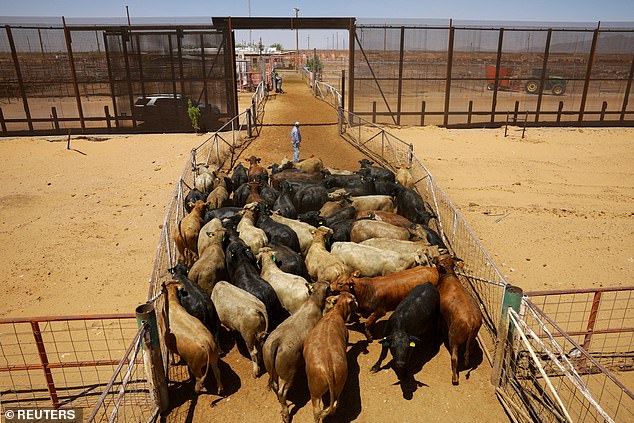
A single infected cow can die in under two weeks. Experts warn that the ripple effects could be severe, resulting in mass livestock losses, skyrocketing beef and dairy prices, and deepening food supply instability
The USDA stated in a press release: ‘When NWS fly larvae (maggots) burrow into the flesh of a living animal, they cause serious, often deadly damage to the animal.’
The US has also approved $165 million in additional emergency funds for enhanced surveillance, stockpiles, quarantine pens, and border safeguards.
SIT was first tested in the 1950s on Curaçao, then scaled for America’s eradication campaigns of the 1960s through 1970s. This eco-friendly tactic succeeded without insecticide sprays.
Some experts caution that while SIT is species-specific and non-toxic, making it unlikely to be weaponized, it still carries risks.
The recent crash of a plane releasing sterile flies near Guatemala, which killed three people, highlights that even non-chemical methods carry serious real-world dangers.
According to USDA scientists, fly larvae in the wild drop from their hosts after feeding, burrow into the soil, and pupate.
In the lab, they are moved to sawdust trays where they mature into adults, each resembling a dark brown Tic-Tac mint before hatching.
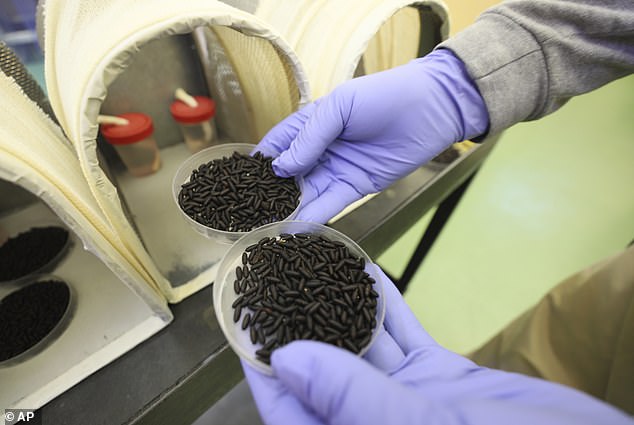
The Panama-United States Commission for the Eradication and Prevention of Cattle Screwworms (COPEG), a worker holds two small containers of New World Screwworm fly pupae at a facility that breeds sterile flies in Pacora, Panama
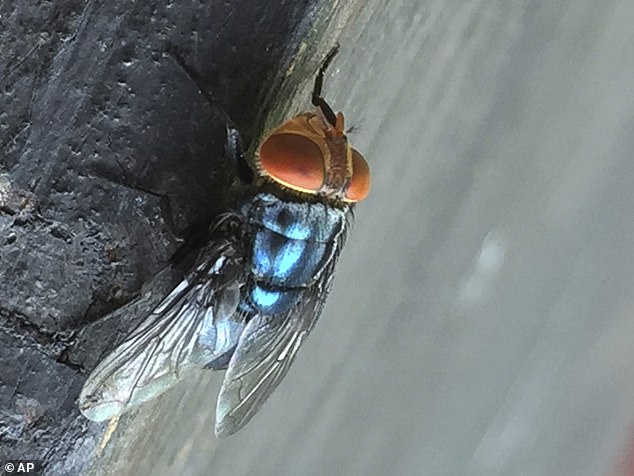
Officials say the stakes are massive because if the infestation spreads unchecked, it could devastate cattle herds across the southern US, especially in states like Texas, which holds 14 percent of the country’s cattle
But raising hundreds of millions of flies is not simple. Flies require precise conditions to reproduce. ‘
Cassandra Olds, an entomologist at Kansas State, said: ‘You’ve got to give the female the cues that she needs to lay her eggs, and then the larvae have to have enough nutrients.’
‘Feed typically includes egg powder, cattle blood plasma, and molasses,’ she added.
The New World Screwworm first broke through containment in Panama’s Darién Gap in 2022, an area where over 1.2 million migrants headed for the US crossed in recent years.
The same route may have helped transport infected livestock or injured animals that enabled the parasite to spread northward.
As of June 2024, screwworms have been found just 500 miles from the US border.
Models predict that by 2055, the parasite could infest Texas, Louisiana, Florida, Arizona, and even California, due to warming temperatures that allow it to survive year-round.
‘Something we think we have complete control over, and we’ve declared victory over, can always rear its ugly head again,’ said Burgess.
Officials say future fly facilities may need to remain active long-term to stay ahead of outbreaks.












